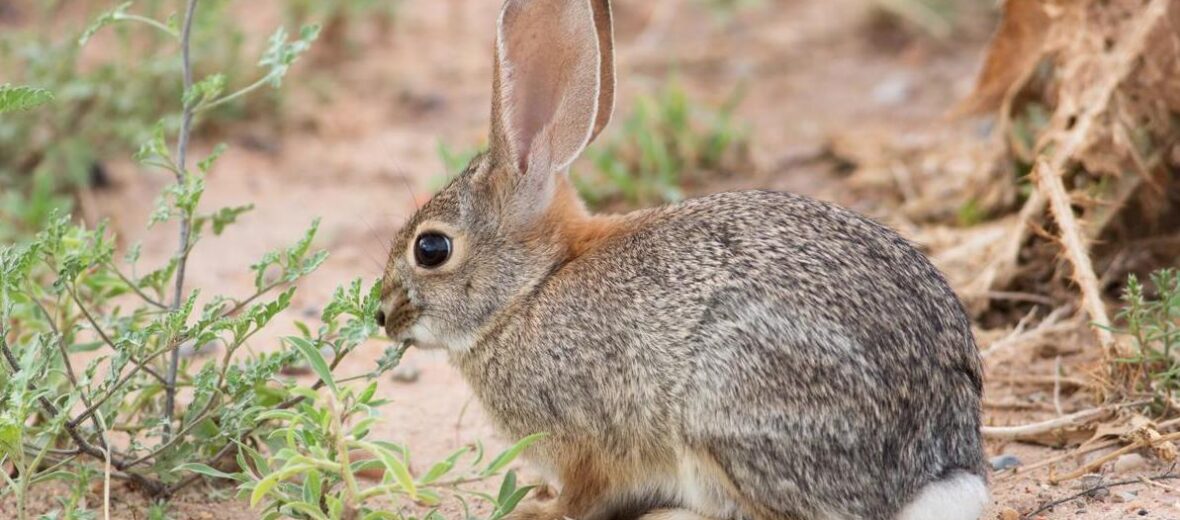
The desert cottontail, aka Audubon’s cottontail, is a commonly found species of rabbit found throughout North America. They’re found from the central plains states on west to California and south to Mexico and Baja California. These little hoppers prefer open upland habitats, sagebrush, riparian areas, dry desert-like grasslands, shrublands, and pinyon-juniper forests. Desert cottontails can be found at elevations of up to 6,500 feet. Like many rodents, they are short lived. Due to their abundant population, they are listed as Least Concern by the IUCN.
First the Stats…
Scientific name: Sylvilagus audubonii
Weight: Up to 1.9 lbs.
Length: Up to 13 inches
Lifespan: Up to 2 years
Now on to the Facts!
1.) Desert cottontails are crepuscular (active at dawn and dusk), but in cooler months, they can also be diurnal (active during the day).
2.) They are social and often found in small groups feeding.
3.) These little bunnies are herbivores (eat plant matter) that graze on leaves and peas of mesquites, fallen fruit, bark, prickly pear pads, and soft twigs of shrubs. But their main favorite is grass.
4.) Cottontails typically take up shelter in their burrows on windy days, as the wind interferes with their ability to hear predators.
5.) When pursued by a predator, they will initially freeze, in the hopes of not being detected by sight predators. If that doesn’t work, then they will flee in a zig zag pattern and make their way to the safety of their burrow.
But wait, there’s more on the desert cottontail!
6.) Their breeding season lasts from January – September.
7.) Females birth up to 6 kits in the abandoned burrows of other animals.
Did you know…?
Desert cottontails can jump up to 2 feet in the air. They can also hop at speeds of up to 19 mph.
8.) Kits are independent by 3 weeks of age.
9.) The names for baby rabbits are bunny and kitten.
10.) Like other rabbits, the cottontail is coprophagic (eats its own feces – poop) in order to extract as much nutrients as possible. They will also produce 2 different kinds of feces too.
But wait, there’s still more on the desert cottontail!
11.) The desert cottontail rarely drinks standing water, as they get most of their hydration from the foods they eat.
Did you know…?
Cottontails rely on their ears to thermoregulate (control body heat). They also pant when hot.
12.) They’ll typically use their noses to adjust the position of the food they eat. These rabbits only use their paws when plucking leaves from living vegetation. Then they’ll use just a single paw to pull the branch down to head level.
13.) Desert cottontail populations are highly reactive to the climate. This means that if wet seasons yield more food, their populations grow and vice versa in times of drought. This is why it’s never a good idea to feed wild animals. Feeding gives the illusion of an abundance of food. That can lead to a boom in their population and, ultimately, to starvation.
14.) Birds of prey, mustelids, coyotes, bobcats, wolves, mountain lions, snakes, weasels, humans, and even squirrels all prey on the desert cottontail.
Now a Short Desert Cottontail Video!
Be sure to share & comment below! Also, check out the Critter Science YouTube channel. Videos added frequently!
Want to suggest a critter for me to write about? Let me know here.



